
Journal of Constructional Steel Research
Scope & Guideline
Pioneering Innovations in Structural Engineering
Introduction
Aims and Scopes
- Structural Performance and Behavior:
The journal highlights research on the performance and behavior of steel structures under various loads, including seismic, wind, and fire. This encompasses experimental studies, numerical simulations, and theoretical analyses that contribute to understanding how steel structures react in real-world scenarios. - Material Properties and Mechanisms:
Research on the mechanical properties of steel, including high-strength and stainless steels, is a core focus. This includes studies on fatigue, corrosion, and the effects of temperature on material behavior, which are crucial for the design and longevity of steel structures. - Connections and Joints:
The journal emphasizes the design and analysis of connections and joints in steel structures, exploring innovative connection techniques that enhance structural performance, improve constructability, and ensure safety against progressive collapse. - Composite and Hybrid Systems:
Research on composite materials and hybrid systems, such as concrete-filled steel tubes (CFST) and steel-concrete composite structures, is prevalent. The journal examines the synergy between different materials to optimize structural performance and sustainability. - Seismic Design and Resilience:
The journal promotes studies on the seismic design of steel structures, focusing on resilience, energy dissipation systems, and self-centering mechanisms to enhance the earthquake performance of steel frames. - Sustainability and Environmental Impact:
Research addressing the sustainability of steel construction, including the use of recycled materials and the life-cycle assessment of steel structures, is increasingly highlighted in the journal.
Trending and Emerging
- Advanced Structural Modeling and Simulation:
There is a growing trend towards utilizing advanced computational methods, including machine learning and artificial intelligence, to predict structural performance and optimize designs of steel structures. - Multi-Hazard Resilience:
Research focusing on the resilience of steel structures against multiple hazards, such as earthquakes combined with fire or blast effects, is gaining traction, highlighting the need for comprehensive safety assessments. - Sustainable and Recycled Materials:
An increasing number of studies are dedicated to the use of sustainable practices and materials, including the incorporation of recycled steel and environmentally friendly design approaches, reflecting a shift towards greener construction practices. - Self-Centering and Energy Dissipating Systems:
Emerging research on self-centering systems and advanced energy-dissipating devices for enhancing the seismic performance of steel structures is becoming more prominent, indicating a shift towards innovative design solutions. - Digital Fabrication and Construction Techniques:
The integration of digital fabrication techniques and automation in the construction of steel structures is an emerging theme, with studies exploring how these technologies can improve efficiency and accuracy in construction.
Declining or Waning
- Traditional Steel Design Methods:
There is a noticeable decrease in publications focusing on conventional steel design methodologies. As the field evolves, there is a shift towards more innovative and performance-based design approaches. - Non-Experimental Studies:
The reliance on theoretical or purely numerical analyses without experimental validation seems to be waning, as the journal increasingly values empirical studies that provide practical insights into steel behavior. - Basic Material Properties:
Research dedicated solely to basic material properties without application to structural systems is less frequent. The emphasis now is on how these properties impact overall structural behavior in practical applications.
Similar Journals
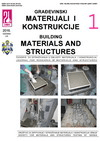
Gradevnski Materijiali I Konstrukcije-Building Materials and Structures
Shaping the future of construction through open-access research.Gradevnski Materijiali I Konstrukcije - Building Materials and Structures is a premier open-access journal dedicated to advancing the field of construction materials and structural engineering. Published by SOC MATERIALS & STRUCTURES TESTING SERBIA, this journal provides a platform for researchers, professionals, and students to share their innovative findings and developments in building materials. With a commitment to open-access since 2012, it fosters unrestricted availability of research for a wider audience, encouraging collaboration and knowledge dissemination. The journal features a diverse range of topics, including material testing, structural integrity, and sustainable construction practices, making it a vital resource for those engaged in the design and analysis of structural components. By fostering the advancement of research and practice in this crucial sector, Gradevnski Materijiali I Konstrukcije plays an essential role in shaping the future of construction and material science.

Teknik Dergi
Navigating the Evolving Landscape of EngineeringTeknik Dergi is a key academic journal published by the Turkish Chamber of Civil Engineers, focusing on the critical fields of Building and Construction as well as Civil and Structural Engineering. Established in Turkey, this journal serves as a vital platform for researchers, practitioners, and students to disseminate innovative findings and advancements within these disciplines. Although its coverage in databases like Scopus has been discontinued since 2022, Teknik Dergi remains a respected resource for its historical contributions, with a record of publication spanning from 1990 to 1998 and then from 2002 to 2022. The journal currently holds a Q4 categorization in both its primary fields, ranking within the 30th and 25th percentiles respectively. Authors and readers can access articles exploring practical applications and theoretical foundations, making it a valuable asset for those engaged in the rapidly evolving landscape of civil engineering. Open Access options are also available, allowing for broader dissemination and engagement with its published work.
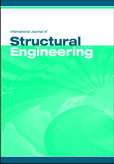
International Journal of Structural Engineering
Navigating the Future of Structural EngineeringInternational Journal of Structural Engineering, published by InderScience Enterprises Ltd, has established itself as a vital resource in the field of civil and structural engineering. With an ISSN of 1758-7328 and an E-ISSN of 1758-7336, this journal is dedicated to disseminating high-quality research that addresses contemporary challenges and innovations in structural engineering. The journal operates under a rigorous peer-review process, ensuring that only the most impactful and relevant studies are shared with the global community. Since its inception in 2009, the journal has been recognized for its contributions, earning a ranking in Q3 for civil and structural engineering under the 2023 Category Quartiles and occupying the 40th percentile in Scopus rankings. While currently not an open-access journal, it provides access to a wide array of original papers, reviews, and case studies that are crucial for fostering academic discourse and supporting the ongoing education of professionals and students alike. As it continues to expand its reach until 2024, the International Journal of Structural Engineering remains a cornerstone for those seeking to enhance their knowledge and practice in the dynamic realm of structural engineering.

ACI STRUCTURAL JOURNAL
Pioneering Insights in Concrete and Structural DesignThe ACI Structural Journal, published by the American Concrete Institute, serves as a premier platform for scholarly articles and research findings in the fields of building and construction and civil and structural engineering. With a commitment to advancing concrete technology and its applications, this journal has amassed an impressive reputation, holding a Q2 ranking in both Building and Construction and Civil and Structural Engineering categories as of 2023. The journal’s focus on innovative research and practical applications enables professionals, researchers, and students to stay at the forefront of industry developments. Although it does not offer open access, the content bears significant impact, ensuring that readers engage with high-quality research. As the journal converges its years of publication from 1987 to 2024, it continues to enrich the academic and professional discussions surrounding structural engineering and concrete science.
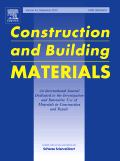
Construction and Building Materials
Driving excellence in building science.Construction and Building Materials, published by ELSEVIER SCI LTD, is a highly regarded journal in the fields of Construction and Building, Civil and Structural Engineering, and Materials Science. With an impressive Q1 ranking across multiple categories in 2023, the journal is recognized for its high-impact research, reflected in its Scopus rankings—13th out of 379 in Civil and Structural Engineering and 9th out of 223 in Building and Construction. Spanning from 1987 to 2024, it serves as a pivotal resource for researchers, professionals, and students aiming to explore advances in materials used in construction and their applications. However, it does not currently offer Open Access options. The journal stands as a vital platform for disseminating cutting-edge findings that can drive innovation and efficiency in the construction industry while addressing contemporary challenges, thus reinforcing its significance in shaping sustainable practices and technological advancements.
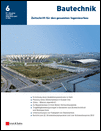
Bautechnik
Exploring the forefront of building technology and methodologies.Bautechnik is a premier academic journal in the fields of Building and Construction and Civil and Structural Engineering, published by ERNST & SOHN in Germany. With a history dating back to 1969 and a significant converged timeline through various years, this journal offers a rich repository of peer-reviewed research dedicated to advancing the principles, methodologies, and innovations within its domains. Bautechnik is currently ranked in the Q3 category for both building and construction, as well as civil and structural engineering, indicating its relevance and contribution to the academic community. Though it does not offer open access, its curated content is accessible to a global audience of researchers, professionals, and students striving for excellence in their fields. The journal aims to foster discussions and disseminate knowledge that impacts the future of construction, architecture, and engineering practices.

STEEL AND COMPOSITE STRUCTURES
Unveiling Breakthroughs in Civil EngineeringSTEEL AND COMPOSITE STRUCTURES is a leading academic journal published by TECHNO-PRESS, dedicated to the fields of Building and Construction, Civil and Structural Engineering, and Materials Science. With a notable Impact Factor and classified in Q1 and Q2 quartiles in multiple relevant categories as of 2023, the journal provides a high-quality platform for the dissemination of innovative research from its converged publishing years of 2004 to 2024. The journal's rigorous peer-review process ensures that only the most impactful studies receive publication, fostering advancements in composite materials and steel structures. Researchers, professionals, and students alike can gain valuable insights into current technologies and applications in these critical fields, making STEEL AND COMPOSITE STRUCTURES an essential resource for anyone involved in structural engineering and materials research. The journal is based in South Korea, and while it offers traditional access options, the breadth of its contributions ensures a global reach and influence.

International Journal of Structural Integrity
Fostering Interdisciplinary Insights in Structural IntegrityInternational Journal of Structural Integrity is a premier peer-reviewed academic journal published by EMERALD GROUP PUBLISHING LTD in the United Kingdom. As a valuable resource in the fields of Civil and Structural Engineering, Mechanical Engineering, and Mechanics of Materials, this journal serves to advance knowledge and foster innovation in these critical areas of study. With an impressive impact factor reflected in its 2023 category quartiles, ranking Q2 across multiple engineering disciplines, the journal is recognized for its contributions to research and practical application. Researchers can benefit from its rigorous publishing standards that encompass a wide array of interdisciplinary topics pertaining to structural integrity. Accessing the journal is facilitated for those seeking high-quality research and findings, vital to both academia and industry. Since its inception in 2010 and extending until 2024, the journal continues to attract scholarly articles that push the boundaries of engineering knowledge, making it an essential platform for professionals, students, and researchers seeking to stay at the forefront of structural engineering."
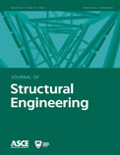
JOURNAL OF STRUCTURAL ENGINEERING
Innovative Insights for Engineering ProfessionalsThe JOURNAL OF STRUCTURAL ENGINEERING, published by the ASCE-AMERICAN SOCIETY OF CIVIL ENGINEERS, is a premier academic journal that focuses on the latest advancements in the field of structural engineering. With a rich history dating back to 1955, this journal has become a crucial platform for disseminating peer-reviewed research that addresses critical issues and innovative solutions in building and construction, civil and structural engineering, materials science, and mechanics. It proudly holds a Q1 quartile ranking across multiple categories in the 2023 Scopus rankings, indicating its influential presence in the academic community. The journal does not currently offer open access options, ensuring that the content is rigorously vetted for quality and relevance, thus appealing to researchers, industry professionals, and students seeking credible, impactful research. With contributions from leading experts, the JOURNAL OF STRUCTURAL ENGINEERING is essential reading for anyone interested in advancing their understanding and practice within this vital area of engineering.
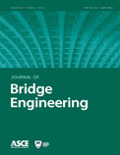
Journal of Bridge Engineering
Fostering Knowledge in the Art of Bridge EngineeringThe Journal of Bridge Engineering, published by the ASCE - American Society of Civil Engineers, is a premier academic journal dedicated to the specialized field of bridge engineering and structural design. With a strong commitment to advancing knowledge from 1996 to 2024, this journal is recognized for its excellence, holding a prestigious Q1 ranking in both the Building and Construction and Civil and Structural Engineering categories according to the latest 2023 metrics. The journal's ISSN 1084-0702 and E-ISSN 1943-5592 signify its commitment to scholarly communication in a digital age. While it does not currently follow an open access model, the Journal of Bridge Engineering significantly impacts the engineering community, appealing to researchers, professionals, and students who seek cutting-edge research and innovative practices in bridge engineering. Its current rankings on Scopus place it among the top journals in its field, reinforcing its role as a critical resource for advancing the state of the art in bridge design, maintenance, and sustainability.